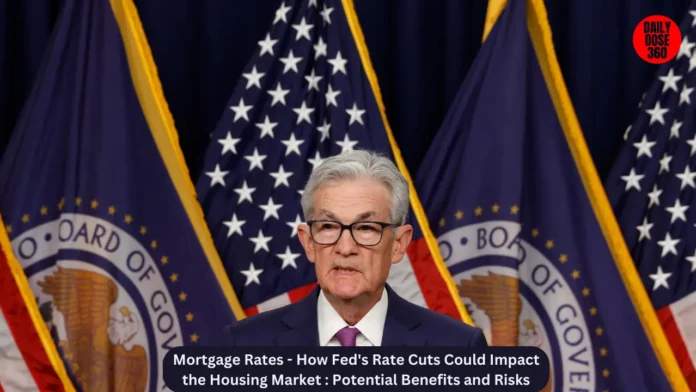Mortgage Rates – The Effect of Fed Funds Rate Cut Strategy on the Housing Market
Mortgage Rates – The U.S. economy seems relatively fine in terms of inflation control, although the housing market remains resilient. High prices and a long-standing shortage of supply still prevents many would-be buyers from entering the market. Many are already asking whether the Fed’s expected cuts will help or further aggravate the situation. Let us examine how such measures taken by the Fed can make housing more or less affordable.
Explaining excess demand for housing in Southern California’s housing market
A significant part of the plight in the housing market rests with the fundamental supply-demand imbalance. There are more buyers than houses in the market which means that the prices will go up. This issue was already a problem before COVID-19 but became much more acute as the customers soared in 2020. The prompt rise of the mortgage rates to generational highs last year also froze the market as homeowners who had gotten low interest loans were unwilling to put their homes for sale.
The Federal Reserve is looking to make a rate cut in the near future which might turn the housing market upside down. If the cuts are significant they will lift the lock-in effect mainly on the part of the homeowners who do not want to sell their houses in a high-rate situation. A half-point cut, while not realistic, would be an indication that the Fed is serious about cutting borrowing costs, which could release more inventory and stabilize prices.
However, the success of these cuts will depend on The Feds elbow grease. An aggressive move in the form of rate cuts would tend to inundate the market with houses thereby lowering price pressures. Conversely, a less aggressive option may not be sufficient to stir up owners of homes with pandemic low mortgage rates to sell their houses particularly when prices remain at historical highs.
Will Fed Rate Cuts Solve the Supply Issue?
While a rate cut would likely bring down mortgage costs, it might not solve the supply problem entirely. The Fed can influence mortgage rates but can’t directly increase the housing supply. Nevertheless, a lower mortgage rate, even dropping from 6.7% to 6%, could encourage more people to sell. As Daryl Fairweather, Redfin’s chief economist, notes, even a slight decrease could have a significant psychological impact on the market.
The challenge is that lowering rates may boost demand without addressing the housing shortage. If more people enter the market without enough homes available, prices could remain high or even rise. This scenario could further strain potential buyers, even as they benefit from lower mortgage rates. As Greg McBride from Bankrate warns, reducing rates may unintentionally make home buying more competitive, limiting the benefits of affordability.
Unequal Effects of Rate Cuts (Mortgage Rates)
Although rate cuts may help homebuyers, they may create a deeper affordability crisis. Because demand exceeds supply, if borrowing rates are reduced, there may be an influx of buyers into the market, leading to a scarcity of houses. The Classic solution that the Fed employs in order to calm down the market, will only make the chronic problems deeper.
To sum up, it is clear that the Fed’s rate cuts are likely to have profound and widespread influence on the housing market but at the same time, it is highly unlikely to be a magic wand. Even though some people may find it easier to purchase homes, they may only serve to elevate demand without providing any more solutions regarding the underlying shortage of housing.
> Hezbollah Fighters Killed In Pager Explosions : Wound Thousands in Lebanon

